App installieren
So wird die App in iOS installiert
Folge dem Video um zu sehen, wie unsere Website als Web-App auf dem Startbildschirm installiert werden kann.
Anmerkung: This feature may not be available in some browsers.
Du verwendest einen veralteten Browser. Es ist möglich, dass diese oder andere Websites nicht korrekt angezeigt werden.
Du solltest ein Upgrade durchführen oder einen alternativen Browser verwenden.
Du solltest ein Upgrade durchführen oder einen alternativen Browser verwenden.
How many Galileos do you want? - Wir ermitteln unsere Queen Top40!
- Ersteller JustPriest
- Erstellt am
JustPriest
Till Deaf Do Us Part
Kleiner Spoiler:Dass "A Night of the Opera" und "Sheer Heart Attack" vor der "II" stehen, da gehe ich durchaus mit. Bei "Innuendo" bin ich schon leicht überrascht, aber "A Kind of Magic"? Come On!
Plätze 3, 4 und 5 liegen punktemäßig sehr dicht beieinander und könnten mit nur 1-2 Listen anders aussehen.
Platz 3: 998 Punkte
Platz 4: 982 Punkte
Platz 5: 959 Punkte
Platz 4: 982 Punkte
Platz 5: 959 Punkte
Spargo
Till Deaf Do Us Part
Bei Innuendo war es klar. Da alleine Innuendo und The show must go on sehr hoch platziert waren und fast alleine soviel Punkte wie Queen II insgesamt haben.Dass "A Night of the Opera" und "Sheer Heart Attack" vor der "II" stehen, da gehe ich durchaus mit. Bei "Innuendo" bin ich schon leicht überrascht, aber "A Kind of Magic"? Come On!
Vei A kind of Magic macht es dann halt die Masse an hoch platzierten Titeln aus mit 5 in der TOP46, davon einer sehr hoch.
JustPriest
Till Deaf Do Us Part
Noch ein kleiner Spoiler:
Bei nur einem Album, was noch ansteht, erhielten sämtliche Songs Punkte. Das hat bislang nur A Day At The Races geschafft.
Bei nur einem Album, was noch ansteht, erhielten sämtliche Songs Punkte. Das hat bislang nur A Day At The Races geschafft.
Thunderhead
Till Deaf Do Us Part
Die Anzahl Stimmen pro Album hätte hier eine andere Aussage als die Punkte pro Album. So beeinflussen hohe Punktzahlen für ein paar Hits den Durchschnitt und die Rangliste. Aber bei Top20 Listen ist ja jede Nominierung schon ein Statement.
Vauxdvihl
Till Deaf Do Us Part
Ja, stimmt natürlich. Von daher wäre ein Albumranking auch mal ganz spannend.Bei Innuendo war es klar. Da alleine Innuendo und The show must go on sehr hoch platziert waren und fast alleine soviel Punkte wie Queen II insgesamt haben.
Vei A kind of Magic macht es dann halt die Masse an hoch platzierten Titeln aus mit 5 in der TOP46, davon einer sehr hoch.
Pale Blue Dot
Till Deaf Do Us Part
Some Day One Day...wieder ich der Einzige, der den drin hatte. Uff.
MartinDortmund
Till Deaf Do Us Part
Auffällig ist, dass fast immer mit aufsteigender Songtitelzahl, die Anzahl der Punkte sinkt.
Ob es an Queen oder an uns liegt, weiß ich nicht.
Ob es an Queen oder an uns liegt, weiß ich nicht.
JustPriest
Till Deaf Do Us Part
Im Sperrbezirk? Um Rosi?SKANDAL!!!
(und ich meine jetzt nicht den Song, ey...)
Meine beiden liebsten Alben nur auf Platz 5 und 6? Lauter Banausen hier! 
JustPriest
Till Deaf Do Us Part
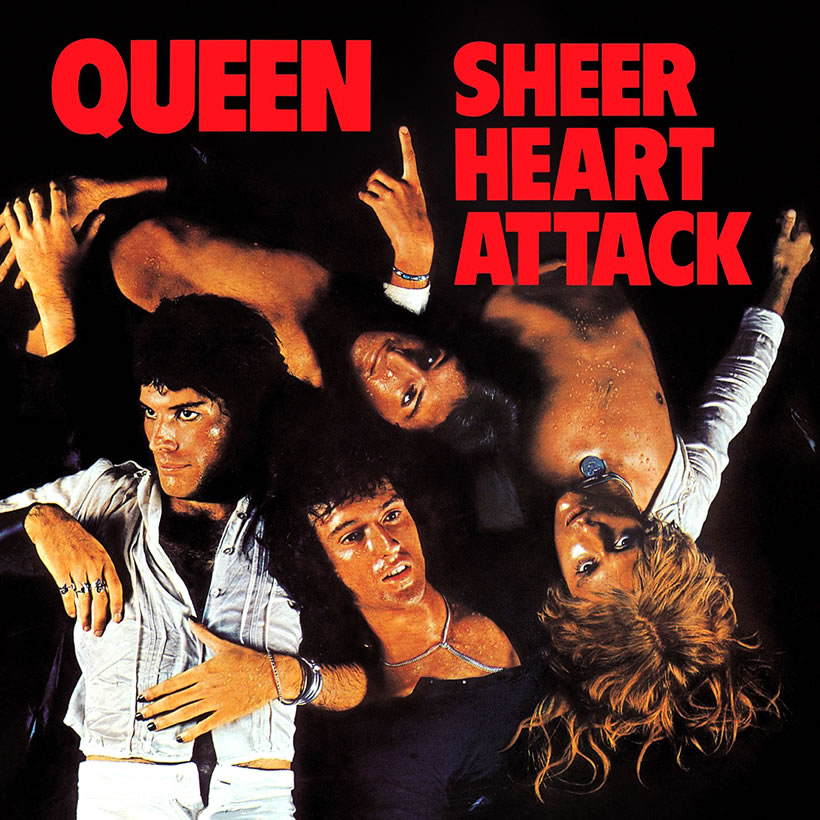
4. Sheer Heart Attack
(1974)
Punkte: 982
Schnitt: 75,5
1. Killer Queen (330 Punkte)
2. Stone cold crazy (165)
3. Now I'm here (161)
4. Brighton rock (120)
5. Flick of the wrist (92)
6. Tenement fuster (48)
7. In the lap of gods (revisited) (44)
8. Lily of the valley (22)
9. In the lap of gods (0)
9. Dear friends (0)
9. Misfire (0)
9. Bring back that Leroy Brown (0)
9. She makes me (0)
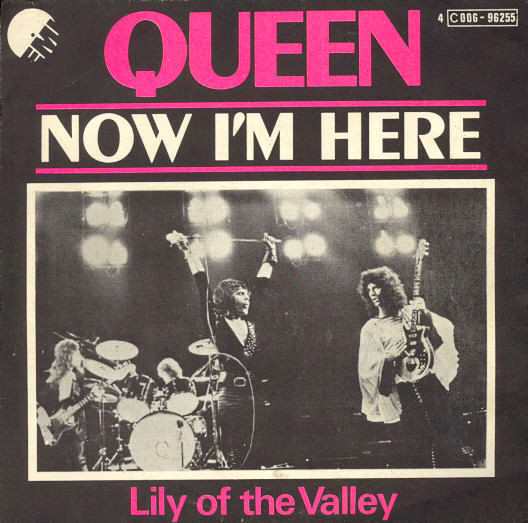
‘Sheer Heart Attack’: A Killer Success For Queen
This album took the band to a whole new level, helping to propel them from a support band on a US tour to a world headliner.With the pier-front echoing finale of “Seven Seas Of Rhye” barely four months old, Queen embarked on recording what would become Sheer Heart Attack. Having laughed off any thoughts of the so-called difficult second album syndrome, the band were moving toward the very top of their game.
Whereas some bands have found their third album an even greater challenge, Queen’s Sheer Heart Attack would herald their arrival as a major musical force. “Killer Queen,” the album’s outstanding single, was an instant classic that soared to No.2 in the UK chart and No.12 on the Billboard chart in America – the band’s first foray into the US Top 20. The album would go platinum and was proof that this was a band that was even greater than the sum of their considerable parts.
Freddie Mercury was a force of nature and Brian May an emergent guitar hero, yet Queen were evidently a great band, a fabulous quartet. The progressive and metal aspects of their sound were superseded by the whole effect: one where drama and outrageous – ambitious – arrangements sat next to gorgeous melodies, carefully wrought balladry, and impeccable musicianship. Queen understood that while rock music need not be symphonic, it would still benefit from light and dark passages, dramatic heights, and reflective interludes. To that extent, Queen, more than many bands, appreciated the value of proper track sequencing – the kind that creates inbuilt tension and a sense of completeness.
Sheer Heart Attack was prefaced by the band’s grandest tour to date, and the album title spoke of what was in store: rock and roll dazzlement (writ large). Queen’s autumn tour of the UK opened in Manchester on October 30, 1974, and on the day of Sheer Heart Attack coming out, the band was in Glasgow playing the Apollo Theatre. As the tour continued, expectant fans had their hopes confirmed – this was a “killer-album.” “Killer Queen” was already at No.5 on the UK chart and by the time of their first of two nights at London’s Rainbow Theatre on November 19 , it had risen to No.2. No wonder Queen were so elated when they walked off-stage at the Rainbow.
Four days later, Sheer Heart Attack made the lower reaches of the Top 20 on the UK album chart, before climbing to No.2 in December. By mid-December, the album entered the US chart at No.153 and thereafter steadily rose up the bestseller list until it peaked at No.12, thirty-seven places higher than Queen II. The band had well and truly arrived, helped in the process by a US tour that began in early February 1975 and ended two months later in Seattle, Washington. Next stop, Japan.
The recording
Recorded between July and September 1974 at four different studios, there were considerable challenges during the making of Sheer Heart Attack. Mid-way through Queen’s first North American Tour, one that started in April 1974 (as a support band for Mott The Hoople), Brian May fell ill with hepatitis. He had been infected with an unclean needle during a vaccination before Queen’s Australian tour in January 1974, which resulted in the Spring tour of America being cut short.When May recovered, the work continued in the studio before he fell ill again, this time with a duodenal ulcer. Brian’s health meant that all gigs were canceled following their return from America and before the UK tour in the autumn of 1974 got underway. The other three members of Queen overcame the issues of May’s absence during recording by leaving spaces in the songs for his solos. When he felt well enough, May returned and completed the tracks, adding his guitar solos and backing vocals.
Queen once again worked with Roy Thomas Baker and were now big enough to move from studio to studio. The trusted Trident Studio was still their chief haunt, but they also worked at George Martin’s Central London AIR, as well as Rockfield in rural Wales and Wessex Sound in London’s leafy Highbury.
And what did we hear on Sheer Heart Attack? A rejuvenated, rehabilitated Brian May, the guitarist on top of his game, and Mercury picking up the demands of frontman with such flamboyant insouciance that audiences were captivated when much of the new material was unleashed on stage, just prior to the album’s release.
For this album, Queen absolutely nailed it, creating in the process a multi-layered sound-scape, dense in harmony, melody, and mystery. They carefully mixed all the ingredients together, along with Baker, and simply soared. What some had previously viewed as precocious was now audacious – risks were taken and pulled off with aplomb.
The album
Despite Brian’s unfortunate illness, once the band hit Rockfield to start work, they were enthused and energized. The opening track, “Brighton Rock,” is a masterpiece with a lengthy, speaker-phasing solo from May (the song’s composer), and a vibrant Mercury vocal that brings to life the characters (Jimmy and Jenny) who fall in love on holiday. The song begins with a whistled refrain from “I do like to be beside the seaside” – from R(h)ye to Brighton.
“Killer Queen” then grabs you by the neck; written by Mercury, recorded at Trident, and featuring Freddie on jangle piano, the lyric is redolent of an updated Noel Coward. It’s the tale of a high-class hooker, described by Freddie, as “one of those bowler hat, black suspender belt numbers.”
May recognized the significance of the album’s lead single – “‘Killer Queen’ was the turning point. It was the song that best summed up our kind of music, and a big hit, and we desperately needed it as a mark of something successful happening for us… I was always very happy with this song. The whole record was made in a very craftsman-like manner. I still enjoy listening to it because there’s a lot to listen to, but it never gets cluttered. There’s always space for all the little ideas to come through. And of course, I like the solo, with that three-part section, where each part has its own voice. What can I say? It’s vintage Queen.”
Roger Taylor’s “Tenement Funster” is one of his rock and roll rebellion numbers, complete with echo guitars, a delightful bass line from John Deacon, and more Mercury piano. “Flick Of The Wrist” was released as the double A-side with “Killer Queen.” Such was the strength of the latter that “Flick” never achieved the same popularity. “Flick Of The Wrist” is a darkly sinister tale from Mercury that sits within a three-track segue leading into “Lily Of The Valley,” a deeply personal Freddie moment regarding his life and major decisions that lay ahead. It also includes a reference to the previous album in the line, “Messenger from Seven Seas has flown to tell the King of Rhye he’s lost his throne.”
Freddie described “In The Lap Of The Gods” as a prelude to “Bohemian Rhapsody,” a song very much in the style of the next album, A Night At The Opera. It’s a composition in three parts that features Roger’s spectacular falsetto that quickly became a crowd pleaser on tour; Taylor proved those that had suggested that it was a synth, rather than a real voice, wrong on a nightly basis.
The Neo-thrash of “Stone Cold Crazy” is credited to the entire band, though it dates back to Mercury’s time in the band Wreckage from the late 1960s. It’s a rough and tough dash into the underworld that’s full of distortion and speed riffing that’s like punk on steroids. The song would go on to have an enormous impact on American rock music and Metallica covered it as the B-side to their “Enter Sandman” single.
The far more delicate “Dear Friends” (May’s song) and John Deacon’s “Misfire,” provide room for reflection before Freddie’s “Bring Back That Leroy Brown” (Jim Croce had a No.1 US hit the previous year with “Bad, Bad Leroy Brown”) that introduced fans to the sight of May playing the ukulele-banjo on stage. Equally experimental is Brian’s “She Makes Me (Stormtrooper In Stilettos),” a New York City soundscape that is evidently thrilled to have soaked up the atmosphere of a menacing Manhattan night.
Finally, the chorus-heavy “In The Lap Of The Gods…Revisited” is big and bold with a prescient aura that indicates Queen will soon be as at home in a stadium as in a theatre or club. This was a natural set closer on tour since it leaves one drained, yet satisfied.
What happened next
Sheer Heart Attack was so much larger than life, in that it would take months to fully appreciate its complexities, but once inside the cranium, the excellence of their studio technique and the sense of the band’s liberation make it one of Queen’s most loved works.Freddie Mercury knew how important this album was to be for the band, saying at the time, “The album is very varied, we took it to extreme I suppose, but we are very interested in studio techniques and wanted to use what was available. We learned a lot about technique while we were making the first two albums. Of course, there has been some criticism, and the constructive criticism has been very good for us.” It’s hard to believe now, but misconceptions remained according to Freddie – “We’ve been called a supermarket hype. But if you see us up on a stage, that’s what we’re all about. We are basically a rock band.”
Sheer Heart Attack proved that Queen was far from just any old rock band. This album took the band to a whole new level, helping to propel them from a support band on a US tour to a headliner. After their tour of Japan ended on May 1, 1975, there was no more touring until November 1975. Queen spent the summer recording A Night At The Opera…and that would prove to be something quite extraordinary.

'Sheer Heart Attack': A Killer Success For Queen
Queen’s 'Sheer Heart Attack' heralded their arrival as a major musical force. 'Killer Queen,' the album’s great single was an instant anthem.
‘Sheer Heart Attack’: Killer Cuts From Queen
Queen took a big step forward in their move towards becoming one of Britain’s elite rock bands with the release of ‘Sheer Heart Attack.’Queen took a big step forward in their move towards becoming one of Britain’s elite rock bands on November 8, 1974. That date marked the release of their third album, Sheer Heart Attack, which would come close to the top of the U.K. chart and give them their first Top 20 entry, on Elektra Records, in the United States.
To many ears, it was also a distinct move into more pop-oriented territory than the band’s first two albums. Sheer Heart Attack, recorded in various studios including AIR and Rockfield in the summer of 1974, was introduced a few weeks earlier by the superior pop-rock of Freddie Mercury‘s “Killer Queen.” There was plenty more where that came from when the album hit the streets.
The record was full of tracks that were among the most memorable of Queen’s early period, featuring the four band members in superbly tight-knit form on tracks like “Flick Of The Wrist,” “Stone Cold Crazy,” the Brian May composition “Brighton Rock” and the Roger Taylor showcase “Tenement Funster.” The album also included the new year 1975 single “Now I’m Here.”
Queen would end in the runner-up spot in the U.K. twice over around this time, on both of the main sales charts. “Killer Queen” stopped at No. 2 on the singles chart behind David Essex’s “Gonna Make You A Star”; then Sheer Heart Attack debuted at No. 6 before climbing into second place behind Elton John’s first “Greatest Hits” set.
In the States, where the band’s first two albums had peaked at No. 83 and No. 49, Sheer Heart Attack peaked at No. 12. It went on to be included in countless “all-time” lists, including NME‘s “Greatest 100 Albums Of All Time,” Kerrang!‘s “100 Greatest Rock Albums Ever” and Mojo‘s “100 Records That Changed The World.” Queen’s momentum was growing fast.
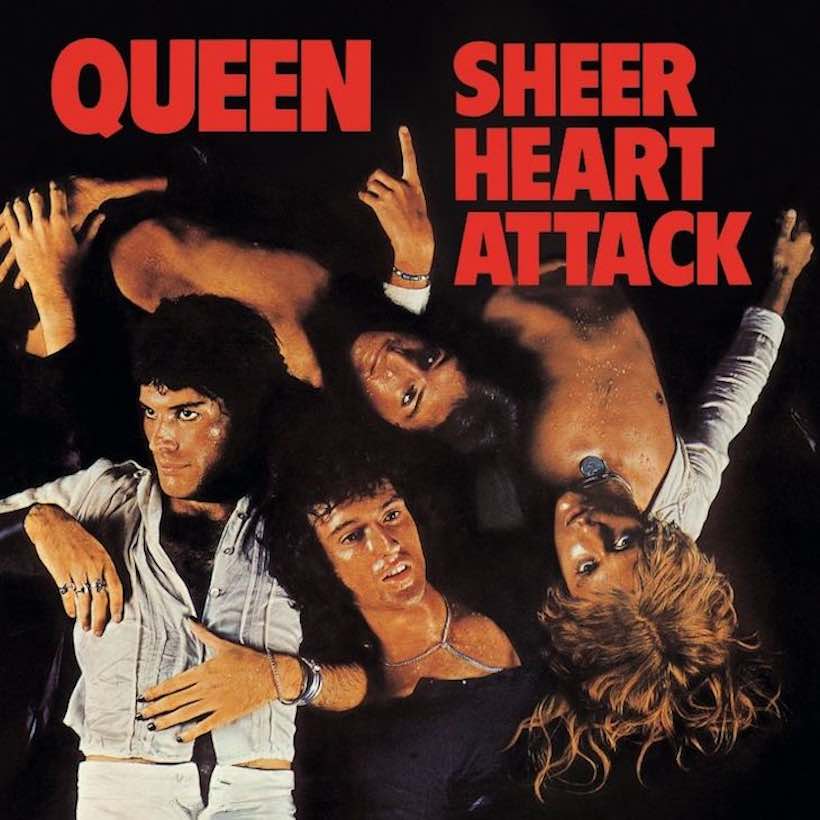
'Sheer Heart Attack': Killer Cuts From Queen
Queen took a big step forward in their move towards becoming one of Britain’s elite rock bands with the release of ‘Sheer Heart Attack.’
Queen’s ‘Sheer Heart Attack’ Quiz
How well do you know Queen’s third studio album, ‘Sheer Heart Attack’? Test your knowledge with our quiz below!
Queen’s ‘Sheer Heart Attack’ Quiz
How well do you know Queen’s third studio album, ‘Sheer Heart Attack’? Test your knowledge with our quiz today!
Meine Top3:
1. Stone cold crazy
2. Flick of the wrist
3. Brighton rock
Ich hoffe, keiner bekommt eine schiere Herzattacke, weil das Album Platz 3 um nur 16 Punkte verpasst hat.
Zuletzt bearbeitet:
JazColeman
Deaf Dealer
Eine gute Wahl deiner Top3! Im großen und ganzen ist das hier mein Lieblingsalbum von Queen.
Vauxdvihl
Till Deaf Do Us Part
Ist wohl - neben "II" - auch mein Liebling, aber ich bin offensichtlich nicht der Einzige, der findet, dass das Album zum Ende hin etwas abfällt. Bis 'Stone Cold Crazy' ist es aber ein derart perfektes Meisterwerk, dass da auch im Queen-Katalog nichts drüber geht.
JustPriest
Till Deaf Do Us Part
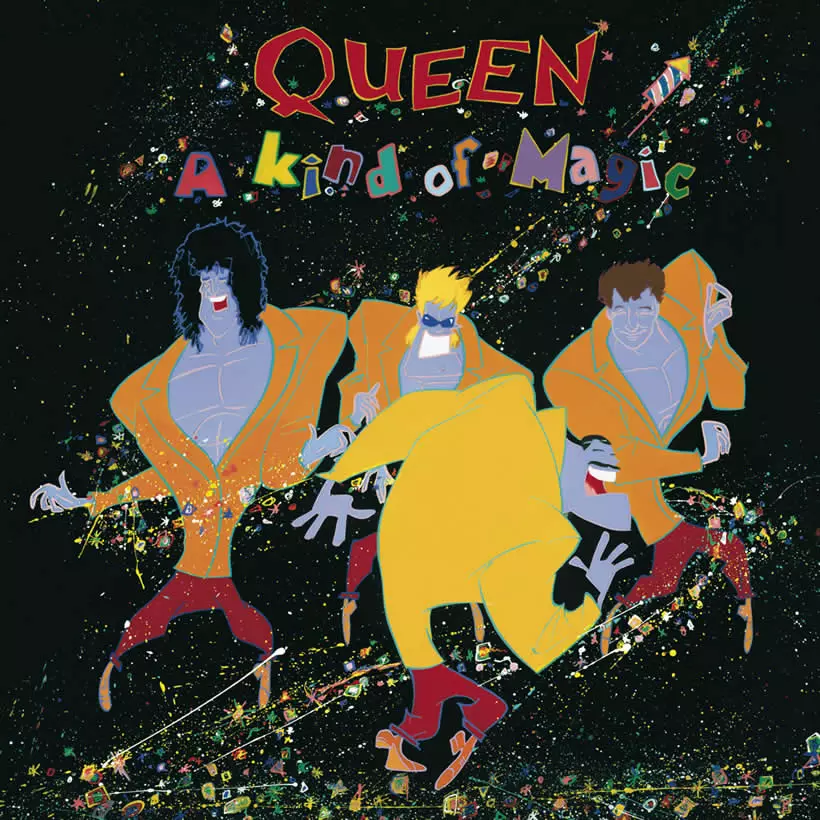
3. A Kind Of Magic
(1986)
Punkte: 998
Schnitt: 110,9
1. Who wants to live forever (387 Punkte)
2. Princes of the univesre (213)
3. One vision (138)
4. A kind of magic (95
5. Gimme the prize (71)
6. One year of love (30)
6. Friends will be friends (30)
7. Don't lose your head (21)
8. Pain is so close to pleasure (13)
‘A Kind Of Magic’: How Queen Maintained Their Spellbinding Run
Queen’s 12th album was released in 1986 during a renaissance for progressive rock.Queen’s 12th album, A Kind Of Magic, was released in 1986 during a renaissance for progressive rock music, with both Genesis and their former lead singer Peter Gabriel aspiring to the heights of Messrs. May, Mercury, Deacon and Taylor were delighted to return to the top of the UK chart with a double-platinum-coated bullet.
Queen, having survived for over a decade at the sharp end of the business, were now too canny to care whether they were fashionable or not. It was their appearance at the Live Aid concert held in Wembley Stadium that gave them national treasure status, exposing them to an audience outside their traditional fan base. Freddie Mercury was keen to capitalize on the moment and with the band off the road, having completed The Works touring, they assembled at Musicland Studios in Munich in September 1985 to pick up the cudgels.
A Kind Of Magic has a conceptual background since it was the unofficial soundtrack for Highlander, the movie directed by Australian Russell Mulcahy. The film came out a few months earlier than the album, which featured several songs that accompany the action and one, “Princes Of The Universe,” which is the theme song.

The opening cut, “One Vision,” is strictly a Roger Taylor composition (though credited to the entire group) featuring distorted, sometimes backwards vocals, electronic drums, and lyrics loosely based on Martin Luther King’s “I have a dream…” speech. A remixed version of the track appeared on the B-side to the single, released a good six months before the eventual LP.
With the band, Reinhold Mack and David Richards who shared production duties, decided to utilize the emerging digital technology, though that hardly sped up the process as Magic arrived slowly and wouldn’t be completed until April 1986, by when they’d shifted from Munich to Mountain Studios, Montreux, and London’s familiar Townhouse Studios. When finished, this became Queen’s first album on compact disc.
“A Kind Of Magic” also arrived as a single before the parent album and showed Roger Taylor to be on a hot streak. One of the band’s best-known and best-loved songs, the version in the film is quite different to the one that appears on the record. Its pop-friendly melody, allied to a typically robust arrangement from Mercury, ensured a #3 spot in the UK and top ten status just about everywhere else in Europe.
The song was given a tweak by Freddie to emphasize the commercial beast within. Roger, along with session musician and all-round arranger Spike Edney, added keyboards. The 12” vinyl mix is longer than the album or 7” version and is comparable to the live versions of this perennial classic, with its ideal sing-along chorus and earworm dynamic.
John Deacon’s “One Year Of Love” features a string arrangement, an alto sax solo by Steve Gregory (but no lead guitars at all), and some fine Yamaha synth from the bass player. It was one of the more unusual songs in the Queen canon to that point.
The Motown flavored “Pain Is So Close To Pleasure” glides along on Mercury’s falsetto with his co-writer, Deacon, providing most of the other ingredients, such as sampler, synth, drum programming, and the melodious rhythm guitar. It was re-mixed for the German and Dutch market and again the 12” version is longer.
“Friends Will Be Friends” is a piano ballad-cum-rock anthem that showcases the best of Freddie’s flamboyancy and Mack’s simpatico and slick production. It leads naturally into Brian’s pivotal moment, “Who Wants To Love Forever,” which is used during one of the most poignant moments in the movie. Often covered, this highlight, though hardly cast in the easy listening mould, shows that Brian and the band were now adept at writing to a brief, while maintaining their integrity.
Brian’s “Gimme The Prize (Kurgan’s Theme),” a duet between the guitarist and Freddie, is the most soundtrack-conscious piece on the album, largely because of Michael Kamen’s orchestration, although it’s also given a metal slant by May.
Roger’s “Don’t Lose Your Head” is most eclectic and it could be argued that the diversity of material on Magic prevents it from sounding totally cohesive. Joan Armatrading is the guest vocalist here and Spike Edney adds the keyboards.
Queen close the vinyl edition with “Princes Of The Universe,” a tough heavy metal tune that is the only track here to be credited solely to Mercury and is something of a throwback to the older glam sound with punchy lyrics and a brutal beast of a guitar solo.
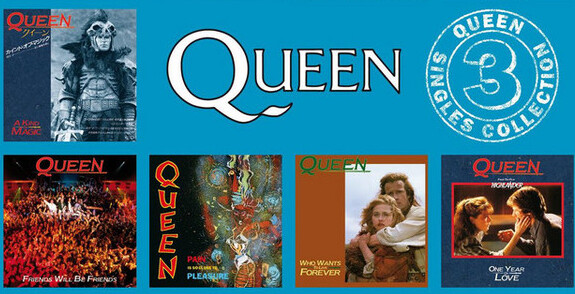
Favorably received on release in 1986, this album also did wonders for the sales of CD players because the compact disc includes three extra tracks: “A Kind Of “A Kind Of Magic,” “Friends Will Be Friends Will Be Friends,” and “Forever,” the piano version of “Who Wants To Live Forever,” with further orchestral accompaniment. Adding over twelve minutes to the LP these three tracks were jealously viewed by those without the relevant machinery. Frustratingly, Queen didn’t choose to include their excellent version of “Theme From New York, New York.”
Five days after release, Queen were back on the road in Sweden for the Magic spree, including some momentous stadium shows at Wembley, Maine Road, Rayo Vallecano, and, crucially Knebworth Park, where an estimated 200,000 took the combined attendance over the million mark with every single concert sold right out.
But this success would be tempered once news of Freddie’s illness started to break. The Magic tour was the last time he appeared on stage with the others. This being Mercury, they certainly went out with a bang. Those who attended Knebworth wouldn’t have known that, but it was certainly a privilege to have been there on the night of August 9, 1986. That is a date indelibly marked in every true Queen fan’s soul.
Queen then took a substantial amount of time off and also severed their partnership with Rheinhold Mack and the Munich connection. Next time the magic would be replaced by the miracle.

'A Kind Of Magic': How Queen Maintained Their Spellbinding Run
Queen’s 'A Kind Of Magic,' was released during a prog rock renaissance, so they were delighted to return with a double platinum-coated bullet.
How Well Do You Know Queen’s ‘A Kind Of Magic’?

How Well Do You Know Queen’s ‘A Kind Of Magic’?
Released in 1986, ‘A Kind Of Magic’ embodies the sound of a self-assured band well on their way to a lasting legacy.
Meine Top 3:
1. Princes of the universe
2. Gimme the prize
3.
A kind of magic
Zuletzt bearbeitet:
Vauxdvihl
Till Deaf Do Us Part
Puh. Das Album auf #3 finde ich schon bizarr, aber das galt ja auch schon für die vielen Nennungen in den Top40. Für mich höchstens #10. Auch Wahnsinn, dass hier jeder Song Punkte bekommen hat. Selbst 'Pain is so Close to Pleasure'. Wobei ich wohl die Topplatzierung von 'Princes of the Universe' noch unverständlicher finde. Bester Song auf dem Album ist für mich 'Friends will be Friends', aber auch der wäre höchstens knapp in die Top40 gekommen. Ist das wirklich vor allem der "Highlander"-Einfluss?
JustPriest
Till Deaf Do Us Part
Friends will be friends wiederum ist einer der 3 Songs, die ich am wenigsten mag und der irgendwie mit den 2 anderen Songs aus dem Rahmen fällt...
Nimmt imho den Flow raus...
Bei sovielen Nennungen in den Top 40, davon eine sehr hohe, kommt halt am Ende Platz 3 raus...das Album hatte auch noch die meisten Singles und ein Album muss ja das beliebteste 80er Album sein...
Bei mir ist es der Highlander-Einfluss plus Nostalgie...
Nimmt imho den Flow raus...
Bei sovielen Nennungen in den Top 40, davon eine sehr hohe, kommt halt am Ende Platz 3 raus...das Album hatte auch noch die meisten Singles und ein Album muss ja das beliebteste 80er Album sein...
Bei mir ist es der Highlander-Einfluss plus Nostalgie...
RageXX
Till Deaf Do Us Part
Ich komme kaum hinterher, hoffe aber, dass dieser Thread am Ende für die Nachwelt archiviert wird. So viel Input und Leidenschaft, toll @JustPriest. Auch, wenn ich immer dachte, so ziemlich alles über Queen und ihre Alben zu wissen, habe ich das wohl tatsächlich nur gedacht. Es geht jetzt gar nicht so sehr um das pure Ranking, sondern all' das, was hier wieder an Erinnerungen zum Einen und Infos zum Anderen auftaucht. Eine ganz besondere Band, spätestens dieser Thread macht das noch einmal mehr als deutlich. Nochmals heißen Dank dafür.
Similar threads
- Antworten
- 2K
- Aufrufe
- 74K
- Antworten
- 2K
- Aufrufe
- 76K
- Antworten
- 1
- Aufrufe
- 217
- Antworten
- 4K
- Aufrufe
- 235K
- Antworten
- 718
- Aufrufe
- 39K
